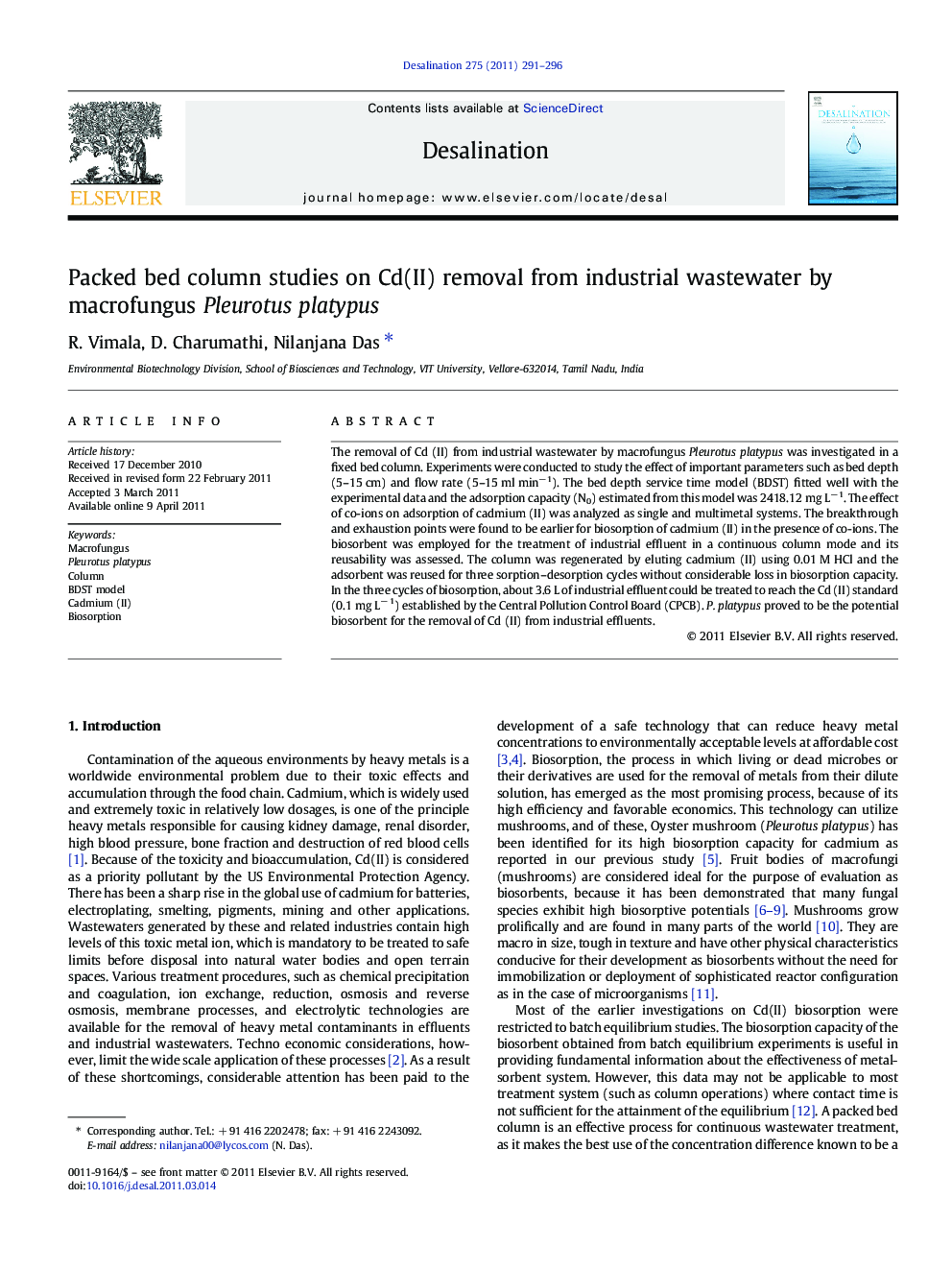| Article ID | Journal | Published Year | Pages | File Type |
|---|---|---|---|---|
| 625095 | Desalination | 2011 | 6 Pages |
The removal of Cd (II) from industrial wastewater by macrofungus Pleurotus platypus was investigated in a fixed bed column. Experiments were conducted to study the effect of important parameters such as bed depth (5–15 cm) and flow rate (5–15 ml min−1). The bed depth service time model (BDST) fitted well with the experimental data and the adsorption capacity (N0) estimated from this model was 2418.12 mg L−1. The effect of co-ions on adsorption of cadmium (II) was analyzed as single and multimetal systems. The breakthrough and exhaustion points were found to be earlier for biosorption of cadmium (II) in the presence of co-ions. The biosorbent was employed for the treatment of industrial effluent in a continuous column mode and its reusability was assessed. The column was regenerated by eluting cadmium (II) using 0.01 M HCl and the adsorbent was reused for three sorption–desorption cycles without considerable loss in biosorption capacity. In the three cycles of biosorption, about 3.6 L of industrial effluent could be treated to reach the Cd (II) standard (0.1 mg L− 1) established by the Central Pollution Control Board (CPCB). P. platypus proved to be the potential biosorbent for the removal of Cd (II) from industrial effluents.
Research Highlights►Packed bed column is an effective process for efficient utilization of biosorbent. ►The process results in better quality of the treated effluent. ►Present study investigates the applicability of P. platypus as biosorbent in column ►Removal of Cd (II) from industrial effluents by P. platypus was studied.
